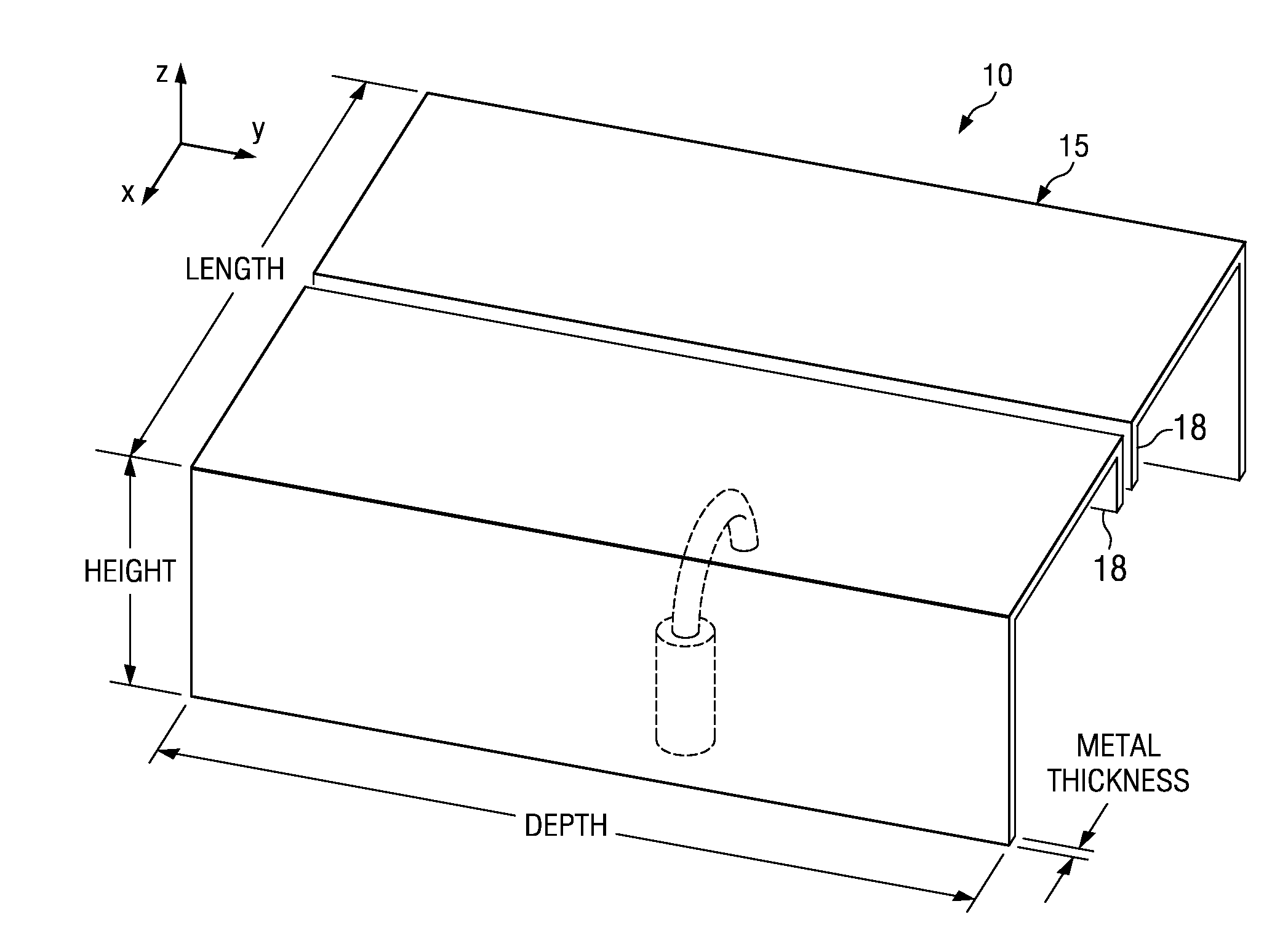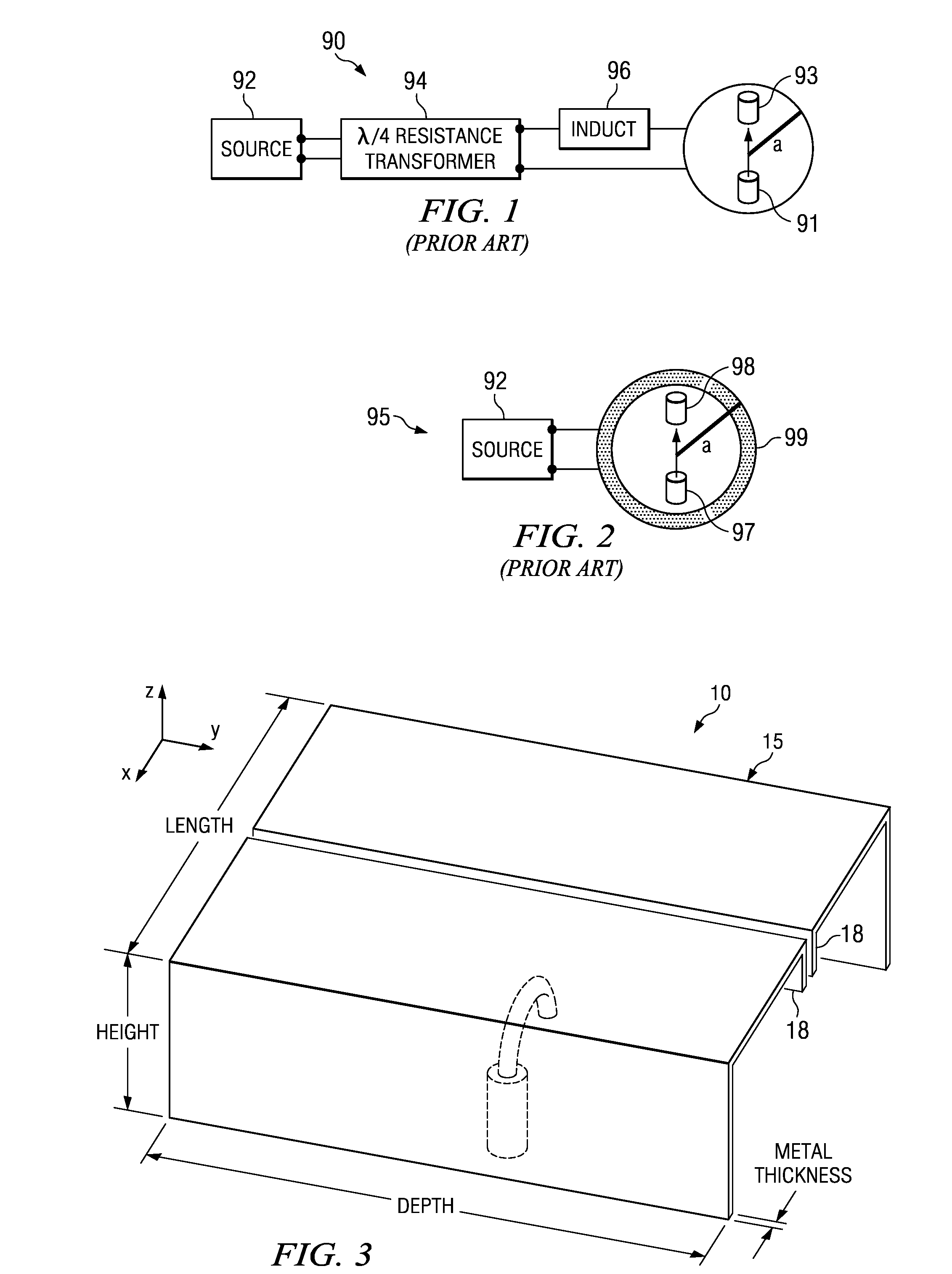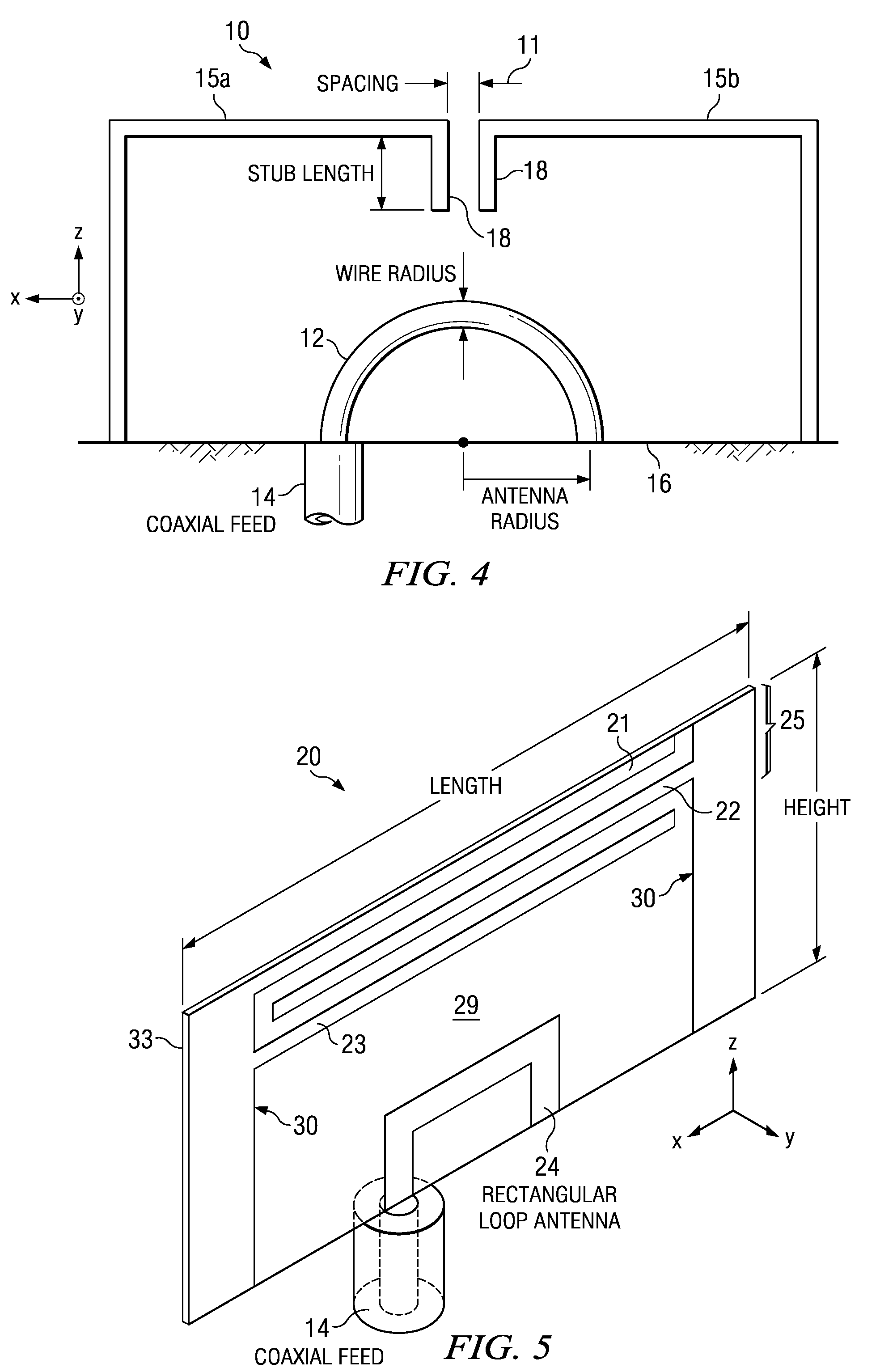Efficient metamaterial-inspired electrically-small antenna
a metamaterial and antenna technology, applied in the direction of loop antennas, resonant antennas, loop antennas, etc., can solve the problems of inefficiency of radiators, poorly matched to a given source, and contradictory requirements, and achieve high radiation efficiency, high overall efficiency of the resulting antenna system, and efficient radiation
- Summary
- Abstract
- Description
- Claims
- Application Information
AI Technical Summary
Benefits of technology
Problems solved by technology
Method used
Image
Examples
example 1
[0134]The design and performance characteristics of both 2D and 3D, electrical-based and magnetic-based EZ antennas have been shown through computer simulation to be naturally matched to a 50-Ω source and, moreover, to have high overall efficiencies. The 2D and 3D, EZ antenna systems are linearly scalable to a wide range of frequencies without any significant fabrication limitations. To validate the numerical predictions, several of the 2D, magnetic- and electric-based EZ antennas were fabricated and tested. Due to a limitation in available measurement tools and expertise, only S-parameters were measurable locally. To obtain at least one set of efficiency measurements, samples of one design were sent to the National Institute of Standards and Technology (NIST) in Boulder, Colo. for testing.
[0135]For example, Design 6 was fabricated using a photolithography technique and was mounted on a 0.8 mm thick copper ground plane. The S-parameters were measured using a Hewlett-Packard (HP) 872...
example 2
[0137]Design 10 was fabricated using a photolithography technique and was mounted on a 0.8 mm thick copper 15 mm×15 mm ground plane. The relatively small copper ground plate was then taped to a larger (521 mm×521 mm) copper ground plane.
[0138]The predicted and measured S11 values are shown in FIG. 24. These data demonstrate a very good agreement with the HFSS predictions. Indeed, the predicted resonant frequency is only 0.7% below the measured value of 455.8 MHz. The measured FBWVSWR was 1.5%, which also is in very good agreement with the predicted value.
example 3
[0139]Two Design 17 electric-based EZ antenna were fabricated using a photolithography technique. Each was mounted on a 0.8 mm thick, 156 mm×156 mm large copper ground plane.
[0140]Although the total power radiated by an ESA has been measured in a variety of ways, each measurement technique has it shortcomings. However, for comparison purposes, a reverberation chamber at NIST-Boulder was used for the power efficiency measurements.
[0141]A reverberation chamber is basically a shielded room, i.e., a room having grounded high conducting metallic walls, having an arbitrarily shaped metallic paddle, i.e., a stirrer or a tuner, that rotates. The rotating paddle creates a statistically uniform environment throughout the working volume of the chamber. Historically, reverberation chambers were used as high-field-amplitude test facilities for electromagnetic interference (EMI) and compatibility (EMC) effects. Presently, reverberation chambers are being used for a wide range of other measurement...
PUM
 Login to View More
Login to View More Abstract
Description
Claims
Application Information
 Login to View More
Login to View More - R&D
- Intellectual Property
- Life Sciences
- Materials
- Tech Scout
- Unparalleled Data Quality
- Higher Quality Content
- 60% Fewer Hallucinations
Browse by: Latest US Patents, China's latest patents, Technical Efficacy Thesaurus, Application Domain, Technology Topic, Popular Technical Reports.
© 2025 PatSnap. All rights reserved.Legal|Privacy policy|Modern Slavery Act Transparency Statement|Sitemap|About US| Contact US: help@patsnap.com



